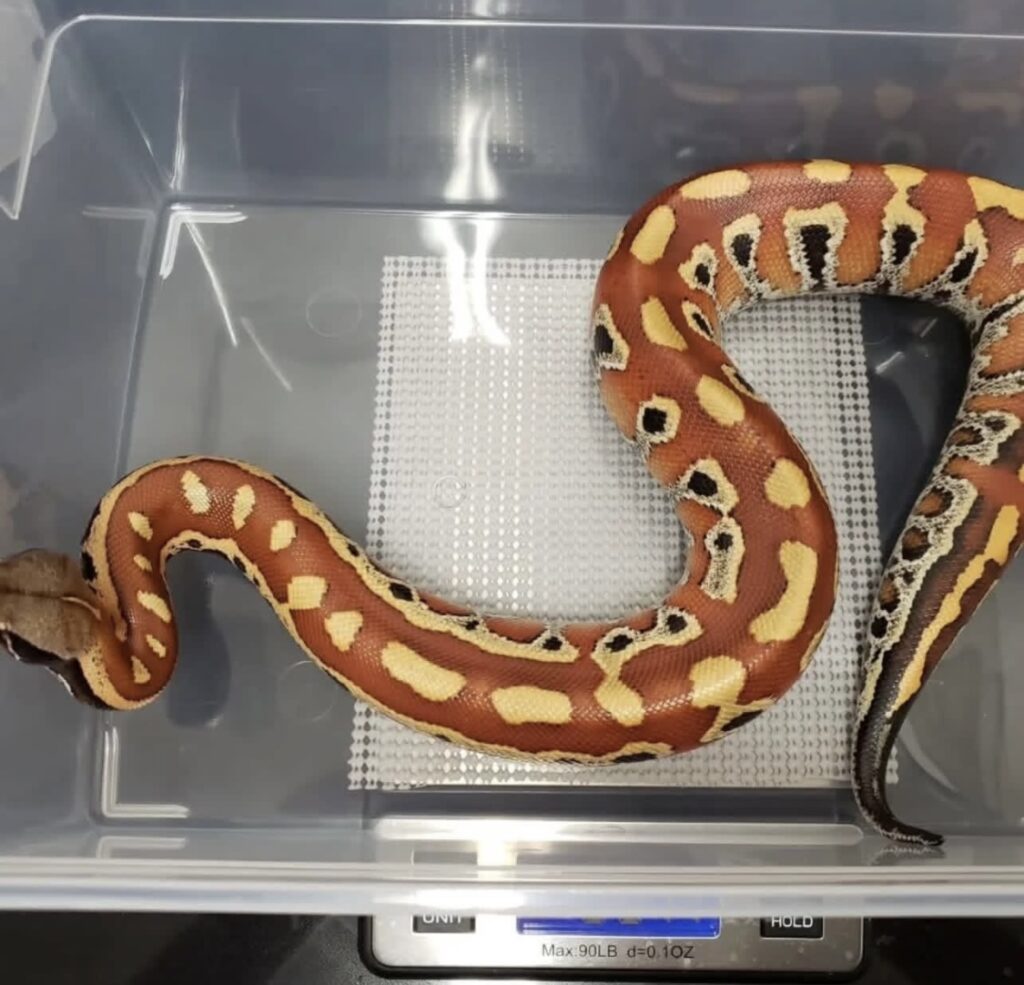Decoding Blood Python Enclosure Sizes: A Comprehensive Guide
Blood python for sale So, you’re thinking about welcoming a Blood Python into your life? Excellent choice! These stunning snakes, known for their rich colors and robust builds, make captivating companions. But before you bring one home, understanding their enclosure needs is paramount. The burning question on every potential owner’s mind is: How big of an enclosure does a Blood Python need?
The answer, in short, depends on the size of your snake. Adult Blood Pythons require an enclosure that reflects their adult size. As a general guideline, an adult blood python up to 4 feet long should be housed in an enclosure at least 36″ x 18″ (the footprint of something like an Exo Terra Large or a Zilla 40-gallon breeder tank). If your blood python exceeds 4 feet, opt for a larger enclosure, such as a 4′ x 2′ tank or a Zoo Med Low Boy. These larger dimensions provide ample space for movement, exploration, and thermoregulation, which are all crucial for your snake’s health and well-being. The importance of proper sizing cannot be overstated. The Environmental Literacy Council, located at enviroliteracy.org, provides additional information. Blood python for sale
Understanding the ‘Why’ Behind the Size
It’s not just about the numbers, it’s about creating an environment where your Blood Python can thrive. Here’s why proper enclosure size is crucial:
- Physical Health: Adequate space allows for natural movements, preventing muscle atrophy and obesity. A cramped enclosure can lead to health problems and a shortened lifespan.
- Mental Well-being: A suitably sized enclosure allows the snake to exhibit natural behaviors like exploring, hiding, and thermoregulating. This reduces stress and promotes a sense of security.
- Thermoregulation: Snakes are ectothermic, meaning they rely on external heat sources to regulate their body temperature. A larger enclosure allows for a proper temperature gradient, with a warm basking spot and a cooler retreat. Without this gradient, your snake can’t properly digest food or maintain a healthy immune system.
- Hygiene: Adequate space makes it easier to maintain a clean and sanitary environment, reducing the risk of bacterial and fungal infections. Blood python for sale
Choosing the Right Enclosure Type
While size is paramount, the type of enclosure is also important. Wooden vivariums are often recommended for Blood Pythons because wood is an excellent insulator, making it easier to maintain consistent temperatures. Glass terrariums can lose heat too quickly, making it difficult to create a stable thermal gradient. However, well-insulated PVC enclosures are also great options because they can hold the proper humidity.
Key Considerations for Enclosure Selection:
- Material: Wood or PVC are preferred for their insulating properties.
- Ventilation: Good ventilation is essential for air flow and prevents the buildup of stagnant air and humidity.
- Security: A secure, screened lid is crucial to prevent escapes. Blood Pythons are surprisingly strong and can easily push their way out of unsecured enclosures.
- Accessibility: Choose an enclosure that is easy to clean and maintain. Front-opening enclosures can be more convenient than top-opening ones. Blood python for sale
Furnishing Your Blood Python’s Home
Once you’ve selected the right enclosure, it’s time to furnish it with everything your Blood Python needs to feel comfortable and secure:
- Substrate: Choose a substrate that holds humidity well, such as cypress mulch, coco coir, or a bioactive mix. Avoid substrates that can be ingested, such as sand or gravel.
- Hides: Provide at least two hides, one on the warm side and one on the cool side, so your snake can feel secure regardless of temperature.
- Water Bowl: A large water bowl is essential for drinking and soaking. Make sure it’s heavy enough to prevent tipping.
- Basking Spot: Provide a basking spot with a temperature of 88-92°F (31-33°C). Use a ceramic heat emitter or a heat lamp, and always use a thermostat to regulate the temperature.
- Décor: Add branches, rocks, and artificial plants to provide enrichment and hiding places. Blood python for sale

